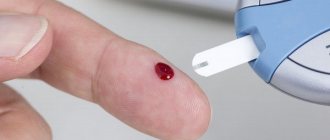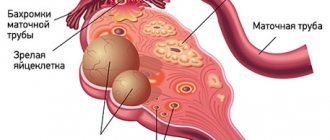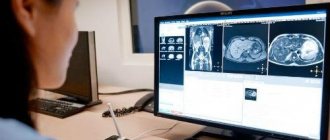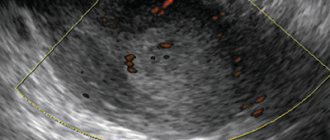Published: 02/10/2021 13:07:00 Updated: 02/18/2021
PCR is a highly accurate diagnostic method and one of the most important discoveries in the field of biology in recent decades. PCR analysis has been used for almost 40 years and is considered the most accurate and sensitive way to diagnose infectious diseases.
PCR is a unique and universal method; the test is used not only in clinical laboratory diagnostics, but also in biology, forensics, archeology and many other scientific fields. All that is needed for analysis is a small amount of any patient biomaterial.
The essence of the PCR method
PCR – polymerase chain reaction.
The method is based on the detection of even small concentrations of the desired diagnostic element. To determine the initially extremely small concentrations of RNA or DNA that need to be determined during the main stage of the study, a method is used to artificially increase the amount of RNA or DNA. And since they are specific and strictly individual for each microorganism or living creature due to the uniqueness of the nucleotide sequence in the fragments, an error in determining the target DNA or RNA is excluded. The genetic information of any living organism is recorded in DNA. This molecule consists of two chains intertwined into a single spiral. Some viruses (like COVID-19) store their code in RNA, a single strand of nucleotides.
Each organism, including viruses, bacteria and fungi, has a unique nucleotide sequence. It can be compared to a fingerprint or a scan of a person's retina. Shortened nucleotide sequences characteristic of each type of pathogen (the causative agent of dangerous diseases) are stored in the databases of scientific laboratories in the form of primers - individual DNA sections typical only for a specific pathogen. These sections are much shorter than any DNA molecule. Such primers are attached to the DNA of the pathogen in the sample and, under the influence of catalysts, reproduce their duplicates many times. This process is called “replication” - multiple increase, duplication of the desired area until it becomes available for determination. The replication process is possible only if the DNA of the pathogen is present in the sample.
Progress of the reaction
One reaction cycle occurs in three stages:
- Heating stage. The DNA helix in the sample is heated for a period of half to two minutes at 94-96 degrees. When exposed to high temperatures, DNA chains break down into separate fragments
- At the second stage, the necessary fragments are caught using primers and fused. This stage takes place at a temperature slightly lower, 4-5 degrees, and is called “annealing.” The duration of the stage also varies from half to two minutes.
- A special enzyme is added to start the self-reproduction (synthesis) of the “caught” gene region - DNA polymerase. And this enzyme starts the fragment doubling reaction, using the starting fragment as a template for synthesizing a copy. The reaction takes place at 72 degrees for 10 to 12 minutes.
Typically, one study consists of 20 to 35 similar cycles.
Advantages of the PCR method
- High specificity. The PCR method determines a given nucleotide sequence inherent in a particular pathogen. Thus, the specificity of the test tends to 100%. The risk of false positive results is eliminated.
- Sensitivity. For PCR, only a few molecules of pathogen DNA (or even already inactive - destroyed viral particles that have retained specific DNA sections in sufficient quantities) are enough for it to be detected during the study.
- Conduction speed. The laboratory receives the result of the PCR test in a few hours, the client – the very next day. Speed of diagnosis is of fundamental importance for timely treatment. For example, when diagnosing bacterial infections, classic culture takes several days, but with PCR analysis, the patient will be able to take action and begin treatment within a day.
- Versatility. Any biomaterial is suitable for research: blood, urine, semen, sputum, pus, fluids from abscesses, etc. In addition, PCR is used in a variety of fields of science and medicine, working even where other methods are powerless.
- Diagnosis of latent infections. PCR diagnostics determines the causative agent of infection even during the incubation period and during the latent course of the disease.
Why is timely testing for hidden infections important?
Unprotected sexual contact with an untested partner can cause the transmission of a latent disease pathogen - infectious, viral, fungal. The danger of infection is that the disease can remain latent for a long time without showing its symptoms. Due to its asymptomatic course, the infection is usually discovered accidentally, and quite often in a chronic form. In addition to localization in the organs of the reproductive system, the pathogen can spread to other organs, causing inflammation of the bladder, kidneys, etc. Some hidden infections are dangerous due to the possible development of benign and malignant neoplasms.
To avoid an unfavorable prognosis and detect a possible disease in time, it is recommended to regularly get tested for hidden sexually transmitted infections. If a woman has had unprotected sex with a man whose health she is not sure about, it is advisable to undergo examination as early as possible. The time for testing for latent sexually transmitted infections depends on the disease: for example, to identify the causative agent of syphilis (Syphilis), it is recommended to be diagnosed 21 days after the suspected infection, for trichomoniasis - after 2-21 days, and for chlamydia - after 10 days.
If you have a permanent partner and use barrier methods of contraception, the frequency of examination is less - a smear and blood test for hidden infections are recommended for preventive purposes approximately once a year or when planning pregnancy.
Indications for PCR analysis
PCR is one of the most popular diagnostic methods in medicine, and it is used in a variety of areas:
- Diagnosis of infectious diseases (hepatitis, HIV, TORCH infections and a huge variety of other types of pathogens).
- Urogynecology (diagnosis of sexually transmitted infections: chlamydia, ureaplasma, mycoplasma, candida, gardnerella, herpesviruses). HPV, the human papillomavirus, plays an important role in women's and men's health. It has been proven that oncogenic strains of this virus can cause cervical cancer in women.
- Neonatology. There are a number of infections that can affect the fetus while still in the womb. Among them are herpes viruses, toxoplasma, and rubella. PCR diagnostics allows you to correctly determine the management tactics and risks of intrauterine infection.
- Respiratory diseases. Diagnostics using the PCR method has become more relevant than ever in 2020 and has demonstrated its indispensability and effectiveness. PCR analysis is the main test and “gold standard” for diagnosing the Sars-Cov-2 (COVID-19) coronavirus infection, which has caused the largest pandemic of recent decades.
- Genetics. Hereditary diseases and paternity are also diagnosed using the PCR method.
PCR tests are used wherever fast, accurate and reliable results are needed.
Who needs diagnostics
Since PCR allows us to detect even hereditary diseases that migrate from generation to generation in their latent phase, conducting such a study will probably be useful for everyone. Of course, such knowledge does not seem urgent and necessary to everyone here and now. But it seems that as civilization develops, the successes of medicine and genetics will also increase. And new discoveries will allow us to make great progress in achieving longevity and health. By that time, a test for heredity may well become a routine and mandatory analysis for everyone.
Until this happens, the test is most often necessary in the following cases:
- If there is a suspicion of contracting the disease through sexual contact, or through an injection, contact with contaminated blood on mucous membranes or open wounds (a small cut is enough), an attack by wild animals, accidental injury to surrounding objects, for example, stepping on an old nail in a field.
- To clarify a diagnosis made by other means, especially in cases where treatment gives a non-specific reaction of the body.
- To establish family ties to claim inheritance rights, or in alimony litigation.
- To identify a person's identity.
Other tests are more related to areas of individual interest. Who is interested in knowing what the transcript of all the nationalities in his family shows? Someone is trying to plan for a future child and is being tested for compatibility. Someone decided to replace the DNA test with a nutritionist and receive individual instructions and advice on proper nutrition.
Preparing for the PCR test
Another important advantage of PCR tests is the lack of specific preparation for testing. It is enough to follow the standard recommendations of a specialist:
- The test is taken in the morning on an empty stomach. In this case, a number of genetic studies are carried out at any time convenient for the patient.
- When taking an oropharyngeal smear test, it is necessary to maintain an interval of 3-4 hours before the test with food and water intake.
- Before testing for sexually transmitted infections, you must refrain from sexual activity for 24 hours.
- No antiviral drugs should be used before the test.
You can always get detailed instructions on how to prepare for each test from your doctor or consultants on our hotline.
Smear in men
It is not difficult to prepare for collecting a smear from the urethra for PCR. It is enough to follow the rules outlined below.
- 2 days before the PCR examination, you need to start abstaining from sexual relations.
- Medications should be stopped approximately 7 days before the test, unless, of course, they were specifically prescribed by a doctor.
- Genital hygiene should be carried out the night before; this should not be done on the day of the PCR test.
- It is recommended not to urinate for approximately 2-3 hours before taking the test.
How is PCR analysis performed?
A lot of time has passed since 1983, when this method was invented, and technology does not stand still. Today, there are several different methods for conducting a PCR test:
- With reverse transcription. The most common method for identifying a known RNA sequence, involving amplification, identification of the pathogen and its identification among samples stored in a scientific file.
- Nested PCR (or “nested”) is used to reduce the amount of nonspecific reaction products and has two stages using two types of primers.
- Isothermal methods - do not require repeated temperature cycles and are less energy intensive.
- Inverse PCR - used if there is only a short fragment of a known sequence, but it is necessary to determine neighboring sequences after inserting DNA into the genome.
- Real-time PCR is a method that allows you to determine not only the presence of a target nucleotide sequence in a sample, but also measure the number of its copies after each amplification cycle, which makes it possible to conduct tests with a quantitative result
These are not all types of PCR technologies that exist today. Scientists are actively developing this important and promising area of laboratory diagnostics, improving PCR methods, honing techniques and inventing new approaches.
PCR test results
The results of tests carried out using the PCR method are known within one day.
An emergency test is sometimes possible and is often used to provide emergency medical care during hospitalization. Then the turnaround time for the result is reduced to just a few hours. The results of the PCR test will provide accurate information about what infection was detected. With quantitative testing, the analysis will also determine the viral or bacterial load on the body. In this case, the results will indicate the titer of the detected pathogen (its amount in one milliliter of sample). Quantitative analysis is especially important in diagnosing diseases caused by opportunistic microorganisms, which are normally present in almost every person. Such microorganisms pose a threat only when their numbers are large, and in other cases they coexist peacefully with the host.
Author:
Baktyshev Alexey Ilyich, General Practitioner (family doctor), Ultrasound Doctor, Chief Physician










